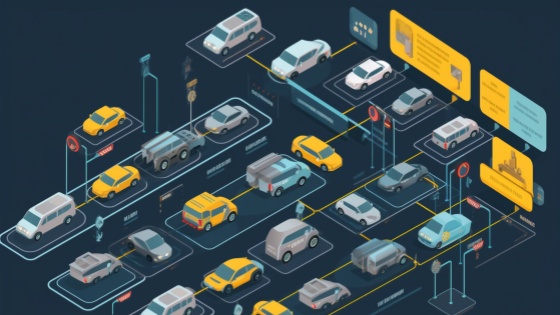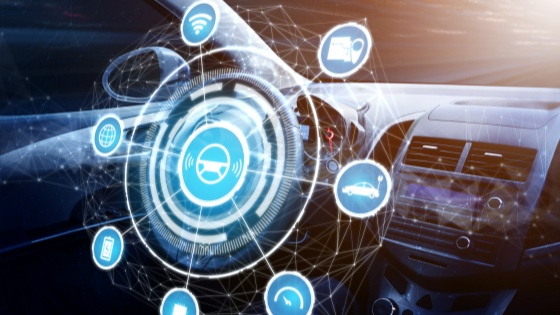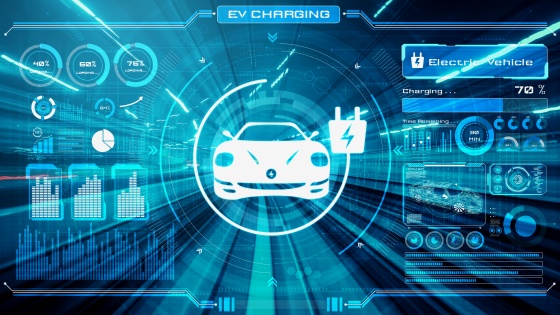Electric vehicles (EVs) are revolutionizing the automotive industry with their energy efficiency, software integration, and eco-friendliness. Unlike traditional gasoline vehicles, EVs boast simpler and more efficient power systems, prioritizing software control and environmental standards from inception, positioning them as leaders in intelligence and sustainability.
Sensors are pivotal in driving the development of EVs. These miniature devices are strategically placed throughout the vehicle, monitoring critical parameters such as battery health, motor performance, and environmental conditions. They provide invaluable data for achieving optimal performance, safety, and efficiency.
For instance, the Tesla Model 3 utilizes over 50 sensors to ensure smooth vehicle operation, safe battery function, and passenger comfort. Battery sensors monitor temperature and voltage to prevent overheating or damage, ensuring prolonged battery life. Motor sensors precisely regulate motor speed and torque for seamless acceleration and braking. Environmental sensors detect surroundings, enabling automatic adjustment of lights, wipers, and other features, while also providing essential data for autonomous driving systems.
As EV technology advances, sensors are evolving as well. Expect to see more sophisticated sensors, particularly for autonomous driving and vehicle networking, further enhancing performance and efficiency.

Understanding Electric Vehicle Sensors: Key Parameters and Roles
Electric vehicle sensors act as the "eyes" of the vehicle, constantly monitoring changes within the vehicle and its surroundings to ensure smooth operation, energy efficiency, and safety. Let's explore how these sensors function and their crucial roles.
Monitoring Key Parameters for Performance and Safety
Battery Status:
Battery Voltage: Reflects remaining battery power, ensuring endurance.
Battery Current: Monitors charging and discharging, preventing overcharging or excessive discharge.
Battery Temperature: Monitors temperature to prevent performance decline or damage.
Motor Performance:
Motor Speed: Precisely controls speed for smooth acceleration and braking.
Motor Torque: Controls torque on drive wheels, preventing slippage.
Motor Efficiency: Monitors efficiency to optimize energy use and extend range.
Environmental Conditions:
Temperature: Adjusts air conditioning for comfort.
Pressure: Monitors tire pressure for safety.
Illumination: Controls vehicle lights.
Rainfall: Activates wipers for safety.
Electric vehicle sensors enable:
Precise Motor Control: Achieving smooth acceleration, braking, and energy recovery.
Optimized Battery Management: Extending battery life and improving charging efficiency.
Enhanced Safety Systems: Preventing wheel lock-up during braking and maintaining vehicle stability.
Overcoming Challenges with Sensor Technology
Improving Battery Endurance: Optimizing charging strategies and dynamically adjusting power based on real-time data.
Enhancing Autonomous Driving: Utilizing high-precision sensors and sensor fusion technology for reliable obstacle detection and decision-making.

Types of Electric Vehicle Sensors and Their Roles
Battery Management Sensors: Monitoring battery voltage, current, and temperature for safety and performance.
Motor Speed Sensors: Regulating motor speed and torque for smooth operation.
Temperature Sensors: Monitoring various components to prevent overheating.
Position Sensors: Tracking motor and pedal positions for precise control.
Other Sensors: Including pressure, accelerometer, gyroscope, and environmental sensors for comprehensive data perception.
Trends in Sensor Technology Development
Solid-State Sensors: Smaller, cost-effective, and more reliable.
Multifunctional Sensors: Capable of monitoring multiple parameters simultaneously.
Wireless Sensors: Offering flexibility and convenience without wiring.
Electric Vehicle Sensor Market Trends
Technological Advancement: Improved accuracy, reliability, and integration.
Regulatory Standards: Stricter emissions and safety regulations driving sensor demand.
Global Adoption of Electric Vehicles: Increasing consumer awareness and government support.
Data Analysis and AI: Enhancing sensor data processing and application.

Link to Survey by Exactitude Consultancy
• The global electric vehicle sensor market is expected to reach $6 billion by 2029, with a compound annual growth rate (CAGR) of 14.3%.
• Asia is expected to be the largest electric vehicle sensor market due to the region's highest adoption rate of electric vehicles.
• Battery management, motor control, and ADAS sensors are expected to be the fastest-growing market segments.
• Solid-state and MEMS sensors are expected to be the fastest-growing sensor types in the coming years.
The electric vehicle sensor market is poised for significant growth, driven by technological advancements and increasing EV adoption rates. With continuous innovation, electric vehicles are set to become smarter, more efficient, and safer, leading the way towards a greener future.
Post time: Apr-29-2024

